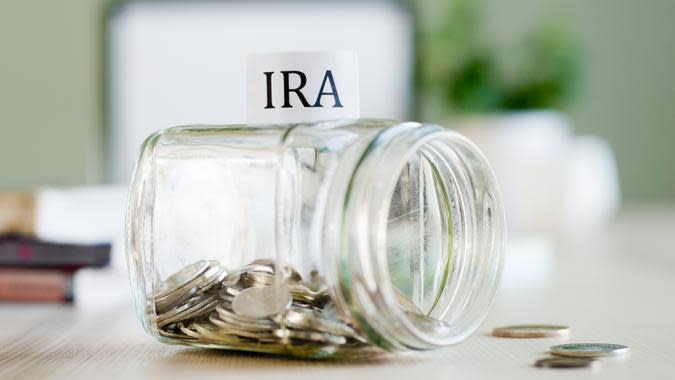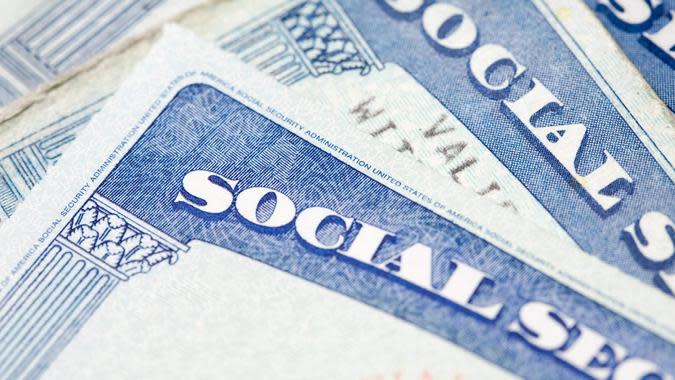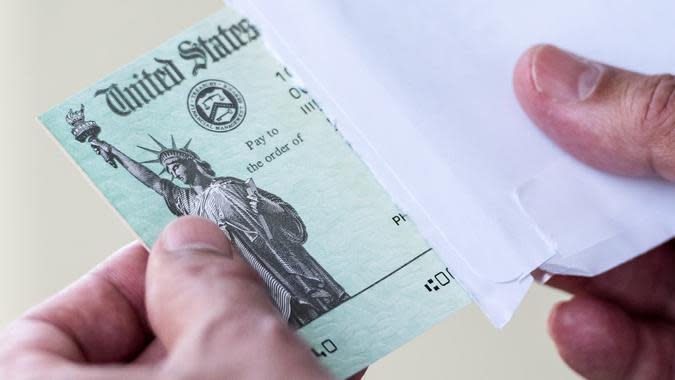42 Easy Ways To Save For Retirement

Almost 46% of Americans have no money saved for retirement, according to a GOBankingRates survey. Some Americans who haven't prioritized saving for retirement say it's because they have too many financial obligations or aren't making enough money to start saving.
More: Jaw-Dropping Stats About the State of Retirement in America
Also See: All You Need To Know About Collecting Social Security While Still Working
Although saving for retirement might seem like an impossible task, there are many easy ways to build that fund. You just have to get started or refocus your efforts and keep going. Use these tips to help grow your retirement savings to $1 million and beyond.

1. Put 15% of Your Salary in Savings
Ideally, you'll start doing this with your first paycheck. If 15% feels like a big number, start small and gradually increase the percentage over time. The more time you have to save, the more time the money has to accumulate and earn compound interest.
Find: Is Traditional Retirement a Thing of the Past? Experts Weigh In

2. Take Your Employer's 401(k) Match
Think of a 401(k) match as free money. Just keep in mind that you won't actually get to keep those contributions until you are fully vested in your employer's plan.
Relax: Feel Like You're Retired With One of These 30 Laid-Back Jobs

3. Set Up an Automatic Direct Deposit
The easiest and least painful way to start saving is to put your contributions on autopilot. Check with your employer to see if you can direct deposit a portion of your paycheck into a retirement savings account.
Tips: 27 Best Strategies To Get the Most Out of Your 401(k)

4. In a Low Tax Bracket? Consider Investing In a Roth IRA
Roth IRAs are smart retirement investment choices for young professionals who are in the beginning stages of their careers with lower salaries.
The benefits: Any after-tax Roth IRA contributions will be taxed at the lower rate during that time. Later, you can withdraw that money tax-free, no matter what your tax bracket. A Roth IRA taxes you based on your current tax bracket, but future withdrawals aren't taxed as long as you meet certain criteria.

5. Catch Up With Higher IRA Contribution Limits
If you're older and behind on your retirement savings, take advantage of catch-up contributions. People who are 50 years old or older at the end of the calendar year can make additional, or "catch-up," contributions to their IRA accounts.
For 2022, the IRA contribution limit is $7,000 for people 50 and older. It's $6,000 for people who are younger than 50.

6. Audit Your Retirement Account Fees Every Year
Do you know all of the fees associated with your 401(k) account? A fee increase of just 1% to 1.5% could amount to thousands of dollars over the course of a couple of years, so do an audit to make sure you're not paying too much in fees.

7. Don't Make Early Retirement Account Withdrawals
Generally, people who withdraw from their IRA before age 59 1/2 are subject to a 10% tax penalty fee, as well as a tax on the income. However, there are many ways to avoid withdrawal penalty fees.
Find Out: Is Now a Good Time To Raid Your 401(k)?

8. Rent Out a Spare Room, Storage Space or Garage
People of all ages can tap into the new sharing economy by renting out space in their homes, extra parking spots or storage in their attics and garages. Airbnb, VRBO and JustPark are popular sites that facilitate these services.

9. Delay Social Security Payments for as Long as You Can
If you wait until your full retirement age, typically around age 66 or 67, you'll receive 100% of your Social Security benefits. If you delay your retirement beyond your full retirement age, your benefits will increase by a certain percentage until you reach 70.

10. Move To a Cheaper Location
Your current city or state might not be one of the most affordable places to live. Do some research to find the cities with lower living expenses and taxes, allowing you to keep more money in your retirement fund.

11. Downsize Your Life
Downsizing provides an opportunity to save on housing payments, home maintenance, utility fees, cost of living and taxes. It's also a great way to trim down what you own and enjoy the simpler things in life.

12. Shop Around for Better Insurance Rates
Do an annual audit of your insurance expenses, and shop around to make sure you're getting the best deal. You might be surprised by how much money you can save by comparing rates. Take the money you saved and put it in your retirement fund.

13. Share a Car With Your Partner or Spouse
To free up extra cash to put toward retirement savings, see if you can get rid of a car you don't really need. Many couples might find they can get around just fine by sharing one car, which cuts down on gas, maintenance and insurance costs. You might be able to forgo car ownership altogether by using ride- and car-sharing services.

14. Use Senior Citizen Discounts
Aside from growing wiser, one of the biggest perks of getting older is taking advantage of senior discounts on everything, including movies, restaurants and entrance to certain events and attractions. These discounts can save you money and make retirement living more affordable.

15. Consolidate Your Multiple IRAs
If you have a bunch of IRAs floating around, consider consolidating them into one easy-to-manage account to save money on costs. For example, you might be able to save money on trading fees and fund expenses.

16. Put Every Tax Refund Into Savings
It's tempting to use the extra money from your tax refund on a new toy or vacation. But these spurts of cash provide the perfect opportunities to give your retirement savings a big boost.

17. Make a Weekly Meal Plan
Planning weekly meals can keep you from impulsively eating out and overspending at the grocery store, as well as reduce your food waste. There are tons of apps, like MealBoard, to help you plan and budget your meals. Blogs, like Meal Planning Magic, can be a good way to get mealtime inspiration.

18. Cut the Cable Cord
Cable television is no longer an essential utility; it's an overpriced and unnecessary service. Cut the cord and put whatever money you save into a retirement savings account.

19. Get a Part-Time Job During Retirement
Many retirees enjoy working part time as a way to increase their income and stay active in the community. Some part-time job ideas include teaching, coaching, real estate, notary services and consulting.
More Options: Senior-Friendly Jobs That Are Perfect for Retirement

20. Exercise, Eat Well and Take Care of Yourself
According to the Fidelity Retiree Health Care Cost Estimate in 2019, a couple who retired that year at age 65 will incur $285,000 in healthcare costs during retirement. Taking care of your health early in life can help cut your medical costs, which means your retirement savings will automatically be higher.

21. See a Certified Financial Planner Once a Year
Your money might grow faster -- and last longer -- if you use a trusted certified financial planner or advisor to help you set goals, stay on track and protect your assets. Many CFPs specialize in retirement planning and work on a fee-only structure, which can reduce the cost of the service.

22. Use Your Home Equity To Fund Your Retirement
If you've built home equity over the years, consider selling your home and using the proceeds as part of your retirement fund. Just remember that your cost of living might be affected if you need to rent a new home or move into a retirement community.

23. Learn To Stick To a Budget
Think of a budget as an action plan, not a deprivation plan. It's not about how much you can afford to spend; it's about how much you can afford to save.

24. Bring Your Lunch to Work
Buying lunch every day could cost you thousands of dollars a year. That's money that should be going into your retirement fund. Plus, making your lunch is healthier and takes very little effort.

25. Pay Off Credit Card Debt as Soon as Possible
Whether you decide to pay off your highest rate first or start with the card with the lowest balance, you should pay off that debt if you want to make any headway on your retirement savings goals.

26. Get Better Interest Rates on Your Credit Cards
While you're paying down that debt, make sure you're getting the lowest possible interest rate from your credit card issuer. A simple phone call and negotiating could save you thousands in credit card interest rates this year alone.

27. Use a Flexible Savings Account
These tax-advantaged accounts let you set aside a portion of your money to cover qualifying, out-of-pocket healthcare costs. This reduces your taxable income, which means you'll have more money in your pocket to put toward your retirement fund.

28. Open an Individual Development Account
An Individual Development Account (IDA) can help low-income individuals save toward a specific goal such as homeownership, which can be a key asset during retirement. With an IDA, savings amounts are matched. However, you must meet certain criteria to qualify.

29. Have a Garage Sale
Clear out those closets and get rid of that storage space once and for all. Turn your junk into cash and learn how good it feels to live with less stuff and more money.
Cash In: 20 Hidden Sources of Income Lying Around Your House

30. Invest Your Holiday Bonus
If you receive a holiday bonus each year, turn that money into the gift that keeps on giving by putting it right into a retirement account.

31. Start Small and Slowly Increase Your Savings
Start with $100 a month and aim to double it after a year -- and the year after that, and the year after that.

32. Be Realistic About Your Returns
Ignore tall tales of 20% returns -- it's completely unrealistic to expect that from your retirement savings. Understand that saving for retirement is about the long haul; the longer you have your money invested, the more likely you will see average returns.

33. Rebalance Your Investment Portfolio
Once you have accumulated a significant retirement account balance, make sure you have a balance of stocks, bonds and cash that reflects your risk tolerance.

34. Reinvest Child Care Expenses
Child care costs are one of the biggest challenges working parents face. Once your kids have flown the nest, invest that money into your own future.

35. Use a Target-Date Fund
Pick a target-date retirement fund, which automatically adjusts your mix of assets based on which year you plan on retiring.

36. Set Benchmarks for How Much You Should Save
There are many online calculators to help you determine how much you should be saving to reach your retirement goals. Let them be your guide.
See: How Much You Should Have in Your Retirement Fund at Every Age

37. Don't Obsess Over Your Retirement Account Balances
Look at your overall retirement savings once a year. Daily or monthly monitoring might make you feel like you aren't getting anywhere.

38. Don't Forget To Factor In Inflation
Today's cost of goods and services will most likely not be the same when you retire. When you think about how much money you need to retire, make sure to adjust your estimated living expenses for inflation.

39. Stop Saving For College
Parents often make the mistake of sacrificing their own retirements to save for their children's education. Stop contributing to a college savings account until you are caught up on your retirement savings goals. Remember: Your child has the option to get a student loan, but you won't be able to get a retirement loan.

40. Ask Your Employer To Start a Retirement Plan
If your employer doesn't offer a retirement plan, ask for one. There are simple retirement plans employers can offer that benefit both employees and the business.

41. Say No to a New Car
Auto loan rates are low and shiny new cars are tempting, but a new car is not an investment -- it's an expense. Cars quickly depreciate and have high operating expenses. Instead, buy a used car and drive it down to its very last mile.

42. Educate Yourself
If you're going to get serious about saving, you need to educate yourself. Learn about investing and asset allocation by reading books and trusted financial websites and blogs. The more you know, the better choices you'll make.
More From GOBankingRates
This article originally appeared on GOBankingRates.com: 42 Easy Ways To Save For Retirement

 Yahoo Movies
Yahoo Movies 